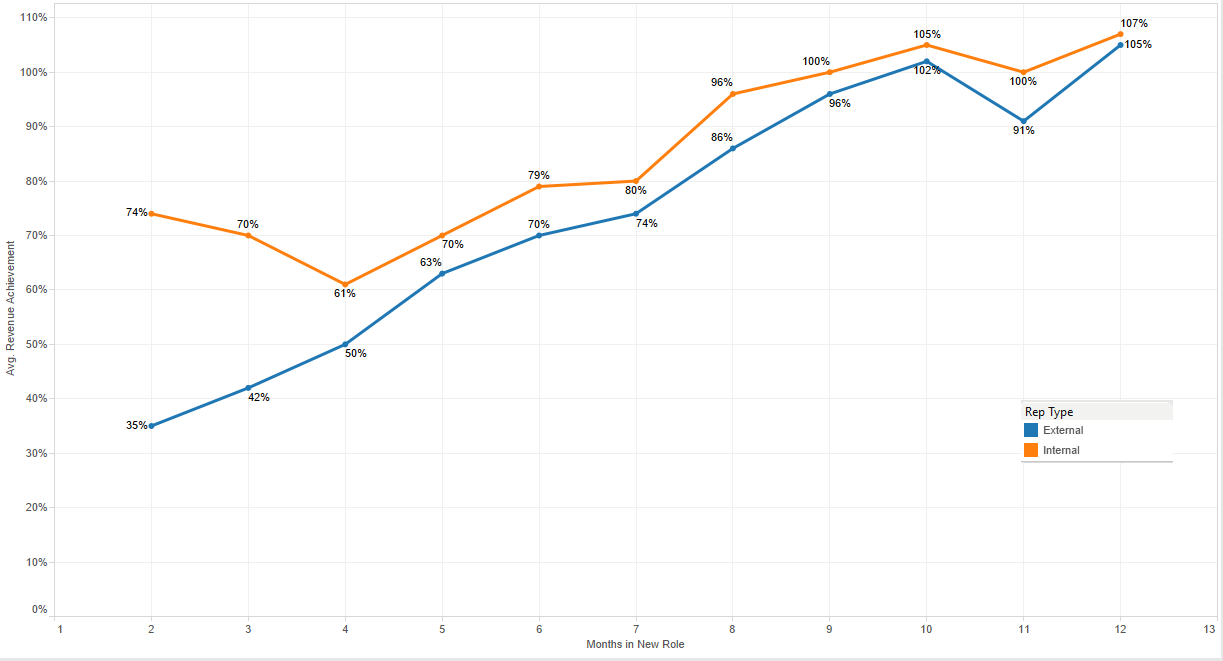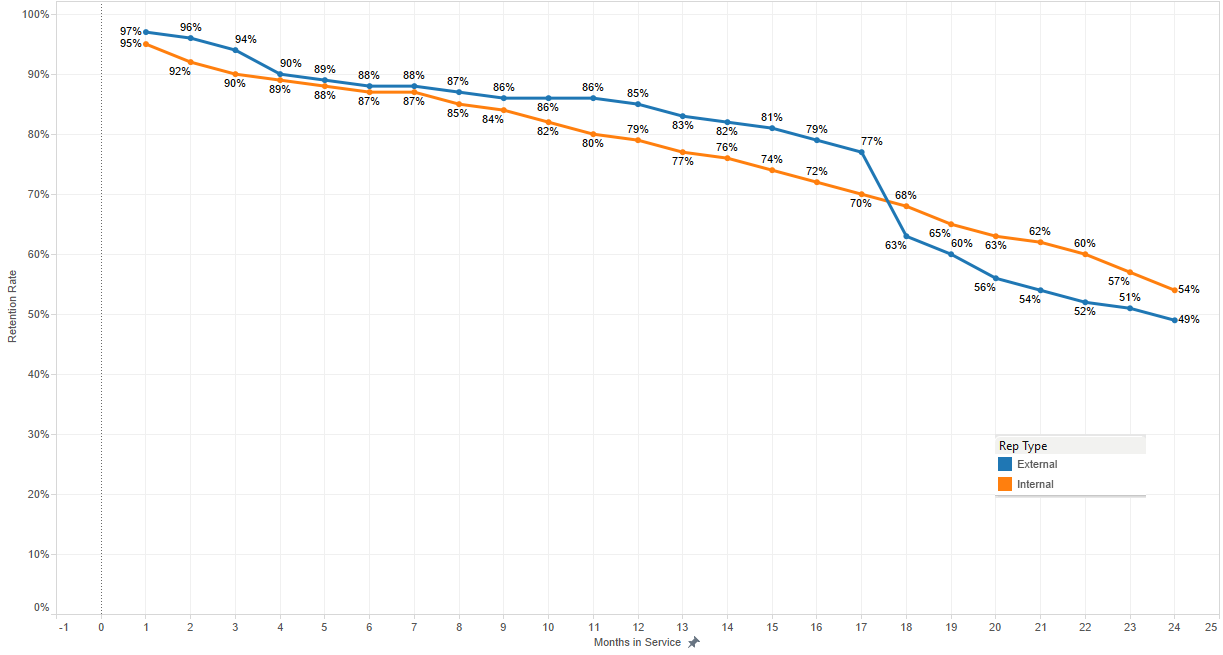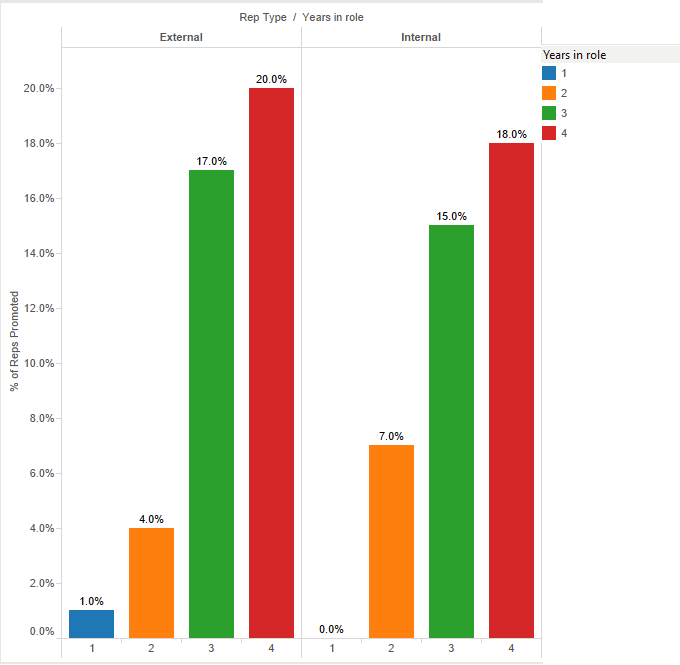
Leaders often face the dilemma: Is it better to promote internally or hire externally? During the early growth phase,
this question becomes even more important because of the inevitable conflict between maintaining internal culture vs.
Hiring someone from outside to fulfil certain skill requirements. This decision is eventually driven by the ability
to mentor newly promoted employees using the right training programs and sufficient lead time. It also
depends on the organizational situation and if there is enough room for failure or not. Once the decision is taken,
the immediate next question is whether it will help the company in the long run.
There are obvious pros and cons associated with both approaches. Internal movers have long experience within
the firm, and they are more likely to be ambassadors of the firm culture and have already acquired important
firm-specific skills that new hires will lack. New hires, on the other hand, bring in a desired skillset due to prior
experience, fresh perspective and insights from other companies/industries. In general,
internal promotions send out a better signal to its employees about abundant growth opportunities in the company,
but on the other hand, it requires a strong training process in place to help promoted employees acquire specific skills
required to be successful in the new role.
According to Wharton management professor Matthew Bidwell, in his research paper titled Paying More
to Get Less:
The
Effects of External Hiring versus Internal Mobility (pdf) “External hires” get significantly
lower
performance evaluations
for their first two years on the job than do internal workers who are promoted into similar jobs. They also have
higher exit rates, and they are paid “substantially more.” About 18% to 20% more. On the plus side for these
external hires, if they stay beyond two years, they get promoted faster than those who are promoted internally
.This behaviour, to some extent, can be explained using human psychology. Internal hires generally have better
knowledge about existing processes and also, in general, have a better rapport with leaders. On the other hand,
external hires take some time to learn new processes, prove themselves and eventually build rapport with leaders.
Exit rates are also on the higher side for external hires because there is generally less acceptance for failure in
case of a lack of rapport.
Overall, external hiring has grown much more frequent since the early 1980s, especially for experienced high-level
positions and especially in larger organizations. “It used to be that smaller organizations always preferred external
hires due to a lack of internal talent while big ones focused more on internal mobility. But now, the pendulum has
shifted towards external hiring and away from internal mobility for large organizations as well.
What is the specific situation in your company? Let’s specifically look at sales positions. Analysis of the performance
of salespeople based on actual sales can be of immense help to take better decisions in the future. For example,
let’s look at the sales performance for one particular role divided into internally promoted reps vs external hires.
Let’s assume that the incentive for a sales rep is based on their monthly revenue quota achievement. Performance can
be differentiated/analysed using various metrics and visualizations.
Comparison of performance over months in a new role

Fig 1: Average quota achievement across months in new role
The above graph helps us understand the initial performance level of internal hires vs external hires in the new role
. From the graph, we can observe that the initial quota achievement % for the internal hires is better than the external
hires, while the external hires start catching up around nine months into their new role. When doing such an analysis,
it would be better that you consider at least 2 years of data so that we get a decent sample size to gauge the trend.
Retention Analysis

Fig 2: Retention rate in the new role across months
As is visible from the above graph, the retention rate of external hires, on average, is higher in the first year in
the role than the internal hires. This stands to reason as newly hired employees have the reluctance to quit within the
first year of their new jobs. Starting 18 months, however, external hires probably start leaving faster due to various
reasons such as work culture differences, inability to meet quotas, general differences with leaders, etc.
Percentage of promotions from the group over time

Fig 3: % of promotions from internal hire and external hire groups over time
The above graph analyzes the promotion behaviour across the 2 groups. From the visual,
observe that internal hires continue to fare better till about 2 years. After this, the external hire group tend to
do better.
By comparing retention rate and promotion analysis together, we can understand if the money spent on hiring
externally is justified by the number of leaders produced from external hires.
This blog post illustrates the approach using sales performance analyses rather than using performance evaluation
which may have some induced human bias element (mostly in favour of the internal hires). There are various other
metrics which can be used over time, such as historical performance data, to understand the impact of hiring decisions.














